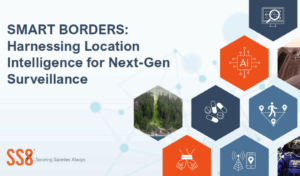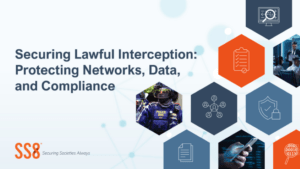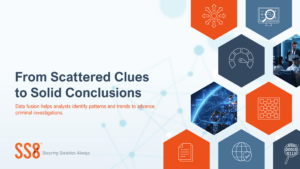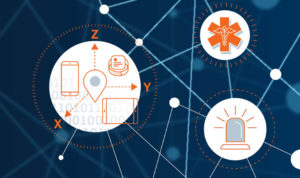
Location Intelligence: Protecting People and Property
Geofencing is a critical capability that builds context and insight around location intelligence, extending the value of location analysis across use cases.
In the coming years, AI is expected to dramatically accelerate the evolution of lawful intelligence, giving law enforcement agencies (LEAs) the ability to efficiently draw insight from data at unprecedented
Quantum Computing may enable communications that do not travel across a network in the conventional sense and endanger traditional encryption methods, carrying critical implications for lawful intelligence.
Preventing illicit trafficking is a daunting task for border security agencies. AI-powered Computer Vision and location intelligence enhance security, reduce costs, and close surveillance gaps.
Effective lawful intelligence solutions do more than just ingest and analyze data. They build evidential narratives compelling enough for court that are backed by a fully auditable chain of custody.
Encryption and OTT apps limit the value of lawful eavesdropping tools like wiretaps, but mobile networks offer a powerful engine for new insights: real-time geographical awareness using high-accuracy location.

Geofencing is a critical capability that builds context and insight around location intelligence, extending the value of location analysis across use cases.

Blanketing a nation’s borders with video surveillance is impractical. AI-powered Computer Vision improves efficiency by analyzing feeds in real-time, but not without high costs. Location intelligence helps.

The data involved in lawful intercept operations is highly sensitive. A compromise jeopardizes lives, justice, and national security. Best practices and standards help satisfy compliance and ensure integrity.

With a nearly unlimited variety of data sources available today, many of which are irrelevant to investigations, law enforcement analysts need help finding the needle in the haystack.

Bad actors increasingly use connected devices and services for illicit activities. As 5G networks advance and geopolitical tensions rise, the need for robust public safety
Lawfully intercepted data, including location data, plays a crucial role in enhancing situational awareness and decision-making in criminal investigations. In this whitepaper, SS8 explores the

SS8 helps mobile network operators around the world – including some of the largest – successfully deploy our innovative lawful intercept solutions. Our experience and

When it comes to emergency calls from mobile devices, delivering a location reliably, accurately, and in a timely fashion helps mobile network operators avoid regulatory

As 5G standards evolve with IoT devices, online gaming, immersive virtual and augmented reality, and other use cases, communication service providers and law enforcement agencies

As mobile phone usage continues to grow, the standards for locating emergency callers (i.e., 112, 911 callers) are evolving. Public Safety Answering Point (PSAP) operators
THE DATA SILO DILEMMA FOR LAW ENFORCEMENT
How to Ingest, Filter and Query 5G Volumes
Webinar Presented by Kevin McTiernan